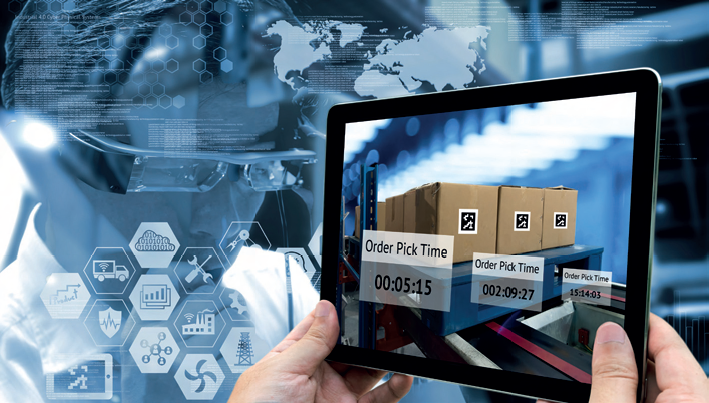
Maximum visibility
The impact of Covid-19 has caused significant disruption to supply chains across the globe and has highlighted the crucial need to build more resilient and robust supply chains that are better prepared for unseen circumstances in the future. But in order to do this, building a ‘smart’ supply chain is key.
But what defines a supply chain as smart, and how can smart supply chains help companies to recover from the negative impact of the pandemic and build resilience against future shocks?
Identifying the bottlenecks
A smart supply chain is essentially one that is as efficient as possible. This requires a continuous review of the supply chain to understand any potential bottlenecks and working to underpin any weak links in the chain to ensure long-term resilience in the face of any shocks. It’s important to either eradicate the challenge, rectify it, or move it elsewhere within the supply chain as required in order to deliver the end result as efficiently as possible.
A truly smart supply chain however can take this efficiency to the next level and has the ability to self-organize and self-optimize. For example, by intelligently controlling quantities of components in the inventory at each link in the chain, this can help to reduce the chance of bottlenecks emerging in the first place as the pacing of the chain is carefully managed.
Increased autonomy
Having complete visibility across the whole supply chain is crucial to making this possible, and this is where technology, empowered by the cloud, can help — enabling new and more efficient business approaches for maximum supply chain visibility, as well as cost and time savings.
Moving to the cloud can significantly speed up order processes thanks to real-time access to an entire organization’s data, such as its inventory. As a result, it can help to effectively manage sales and delivery, no matter where the stock, customer or staff are located.
But what’s really transforming supply chains is the Internet of Things (IoT) technologies that are pushing the boundaries of what’s possible. For example, we now have access to ‘intelligent containers’ — a catch-all term for smart shelves, smart packaging and smart stock systems. This family of technologies allow for smart warehousing — meaning that stock levels are automatically updated in real-time. This means orders can be placed automatically if stock falls below a certain level.
In the past, it simply wasn’t feasible to manually collect the huge volume of data that now emerges out of smart warehousing. As a result, products and components, self-tracking and supply chains are as autonomous as they’ve ever been.
Creating the optimal supply chain
With this sheer volume of real-time data now available, combined with a greater awareness of continuous risks to the supply chain, there has been a significant uptake in IoT technologies which are key to successfully mitigate any potential threats and create higher quality supply chains.
A supply chain is composed of many interworking sections, from the initial source and manufacture of goods to the various stages of distribution. The entire chain could be devastated if even one of these links were to be compromised. As a result, each business across the supply chain should be working continuously to reduce any foreseeable risks.
A key example of how to manage risk is the use of dual sourcing. This occurs when a manufacturer sources the majority of their inventory or one item from one supplier, but retains a minority of the supplied inventory from another. Should the main supplier then suffer an issue that prevents fulfilment, the size of the order with the secondary supplier can be quickly increased to fill a shortfall — reducing disruption and effectively dampening risk.
Get smart or get lost
Looking back at the myriad events of the last 17 months and the disruption it wrought on supply chains, it’s clear that smart supply chains are now a necessity. Supply disruption is always going to be a present danger in some form or another — however it’s the smart supply chains that will have a better chance of successfully mitigating these risks.
It’s worth reiterating that it all comes down to maximum supply chain visibility — achieved by collecting all of the available data in the chain. The smartest supply chain should be designed to manage and optimize itself, reducing the risk of disruptive changes in supply or demand. This autonomy permits those in the chain to divert their attention to the finer points of risk management: the more complex anomalies that require a little extra thought.

Mark Hughes is RVP UK&I, Epicor Software.
Epicor Software Corporation equips hard-working businesses with enterprise solutions that keep the world turning. For nearly 50 years, Epicor customers in the manufacturing, distribution, LBM, retail, and automotive industries have trusted Epicor to help them do business better. Epicor’s innovative solution sets are carefully curated to fit customer needs, and built to respond flexibly to their fast-changing reality. With deep industry knowledge and experience, Epicor accelerates every customer’s ambitions, whether to grow and transform, or simply become more productive and effective.
www.epicor.com